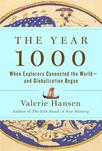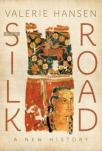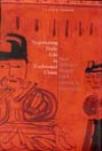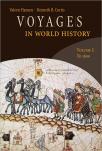Valerie Hansen
Stanley Woodward Professor of History
Office:
HQ 238
Links:
Fields of interest:
China to 1600; Chinese religious & legal history; History of the Silk Road
Bio:
Work History
History Department, Yale University
-
Stanley Woodward Professor of History, 2017-present
-
Professor of History 1998-2017
-
Associate Professor 1993-1998
-
Assistant Professor 1988-1993
Courses Taught
Lecture courses
-
China Present to Past (with Peter C. Perdue)
-
The World Circa 1000 (with Anders Winroth)
-
The Silk Road Rediscovered
Seminars
-
Social History of the Chinese Silk Road
-
Issues in Tang, Song, and Yuan history
-
Documents of the Tang, Song, and Yuan dynasties
Books
-
The Year 1000: When Explorers Connected the World—and Globalization Began (Scribner, publication date April 14, 2020) explains how a new system of global pathways formed in the year 1000 following the Vikings’ arrival in northeastern Canada. In 1000, for the first time in world history an object or a message could travel all the way around the world. Trade goods, people, and ideas moved along these newly discovered routes. Globalization affected both those who went to new places (traders, explorers, slaves) as well as those who stayed home (religious change, riots, onerous labor conditions to produce goods for overseas markets). Europeans didn’t invent globalization. They changed and augmented what had been there since 1000. If globalization hadn’t yet begun in the Americas, Asia, and Africa, Europeans wouldn’t have been able to penetrate the markets in so many places as quickly as they did after 1492.
-
The Silk Road: A New History (Oxford University Press, 2012) presents an integrated political, social, and religious history of the Tarim Basin. This book draws on the continuing stream of archeological discoveries and philological breakthroughs to explain how this very modest commercial artery became the world’s most famous cultural superhighway. In 2017, Oxford University Press released an expanded edition for classroom use entitled, The Silk Road: A New History with Documents, which includes fifty-two primary sources in translation. With Kenneth R. Curtis, Voyages in World History (Wadsworth CENGAGE Learning, first edition, 2010; second edition, 2013, third edition 2016) is an introductory textbook that takes readers on thirty-two different journeys – starting with Mungo Man’s voyages to Australia forty thousand years ago and ending with Ai Weiwei’s travels around the world.In between, students travel to Mesopotamia with Gilgamesh, to Africa and Arabia with a Muslim on the Hajj, to Peru with a cross-dressing nun, and to the New World with the slave Equiano.
-
The Open Empire: A History of China to 1600 (Second Edition, 2015; W. W. Norton & Company, 2000) links the major political events of pre-modern China with social and cultural change. This textbook draws on unconventional sources—archeological sites, paintings, and fiction—to argue that China remained open to outside influences throughout its long history.
-
Negotiating Daily Life in Traditional China: How Ordinary People Used Contracts, 600-1400 (Yale University Press, 1995) analyzes the contracts used to buy, sell, rent, exchange, and borrow all commodities, whether land, money, goods, livestock, or people. Land contracts were also placed in tombs to give the dead title to their grave plots as well as to prevent them from being sued in the courts of the underworld. Because contracts were so widely used for all transactions, in this world and the next, this study concludes, they allow a rare glimpse of how ordinary people understood the law.
-
Changing Gods in Medieval China, 1127-1276 (Princeton University Press, 1990) argues that social and economic developments underlay the religious changes of the Southern Song. In 1100, nearly all people in south China worshiped gods who had been local residents prior to their deaths. The increasing mobility of cultivators in the lowland, rice-growing regions resulted in the adoption of gods from other places. Cults in isolated mountain regions showed considerably less change.
Collaborative Research
-
The Silk Road Project: Reuniting Turfan’s Scattered Treasures, of which I was the principal investigator, ran from 1995 to 1998. The project focused on the documents and art objects found between 1899 and the present in Turfan, an oasis near the city of Urumqi in China’s Xinjiang province. Plundered and then scattered across Europe and Asia in the years before World War I, many of the treasures of the Silk Road lie in archives or warehouses largely uncataloged and effectively lost to Chinese and Western scholarship. Awarded $170,000 by the Luce Foundation, the Silk Road project brought together a team of twenty-five Chinese and American scholars who drew on the disciplines of archeology, history, art history, and religious studies. Over three years, the project held three international conferences in China and the United States and compiled a bilingual Chinese-English finding guide to over 3,000 artifacts. See the website at: http://eastasianstudies.research.yale.edu/turfan/
Edited Volumes
-
The Silk Road Key Papers, Part I: the Pre-Islamic Period (Global Oriental, 2012) gathers twenty-nine of the most important academic papers on the Silk Road with an introduction and an index.
-
(with Helen Wang) (ed.), Textiles as Money on the Silk Road, a special issue of the Journal of the Royal Asiatic Society 23.2 (2013)
-
(with Daniel Kane and François Louis) (ed.), Perspectives on the Liao, a special issue of the Journal of Song Yuan Studies 43 (2013 [appeared March 2015])
Articles
- With Tianyi Hang, “Re-ordering the Pages of the Mariner’s Atlas at Yale: A Proposal,” forthcoming in Imago Mundi 76.2 (2024).
-
“Silk Road cities and their co-existing legal traditions” in Marcenko, Miha. Research Handbook on International Law and Cities, edited by Helmut P. Aust, and Janne E. Nijman, Edward Elgar Publishing Limited, 2021: 17-28.
-
“Revisiting Berthold Laufer’s Work on Walrus Tusks and Trade Across North Asia Circa 1000 CE,” in Ephraim Nissan, ed., Mimesis: Quaderni Di Studi Indo-Mediterranei 12 (2021): 465-469.
-
“The Kitan-Liao and Jurchen-Jin,” in Victor Cunrui Xiong and Kenneth J. Hammond, ed., The Routledge Handbook to Imperial Chinese History. New York: Routledge, 2019, pp. 213-228.
-
“The Synthesis of the Tang Dynasty: The Culmination of China’s Contacts and Communication with Eurasia, 310-755,” in Nicola Di Cosmo and Michael Maas, ed. Empires and Exchanges in Eurasian Late Antiquity: Rome, China, Iran, and the Steppe, ca. 250-750. New York: Cambridge University Press, 2018, pp. 108-122.
-
(with François Louis), “Introduction, part I: Evolving Approaches to the Study of the Liao,” Journal of Song-Yuan Studies 43 (2013 [appeared March 2015]): 1-9.
-
“International Gifting and the Kitan World,” Journal of Song-Yuan Studies 43 (2013 [appeared March 2015]): 273-302.
-
“The Devotional Use of Buddhist Art in Ennin’s Diary,” Orientations 45.3 (April 2014): 76-82.
-
(with Helen Wang), “Introduction” to Textiles as Money on the Silk Road, a special issue of the Journal of the Royal Asiatic Society 23.2 (2013): 155-163.
-
(with Rong Xinjiang), “How the Residents of Turfan Used Textiles as Money,” Textiles as Money on the Silk Road, a special issue of the Journal of the Royal Asiatic Society 23.2 (2013): 281-305.
-
“Silu xinshi xu,” (Introduction to a New History of the Silk Road.” In Patricia Ebrey, Yao Ping, and Leo Shin (ed.) Dangdai Xifang hanxue yanjiu jicui: Zhonggushi juan (Shanghai: Shanghai Guji chubanshe, 2012), pp. 153-173.
-
“The Place of Coins and their Alternatives in the Silk Road Trade,” in Sichou zhilu guguo qianbi ji silu wenhua guoji xueshu taolunhui wenji [Proceedings of the Symposium on Ancient Coins and the culture of the Silk Road], ed. Shanghai Bowuguan (Shanghai: Shanghai Shuhua Chubanshe, 2011), 83–113. Chinese translation, 114-135.
-
“The Kitan People, the Liao Dynasty (916-1125) and their World,” Orientations 42.1 (Jan/Feb 2011): 34-42.
-
“The Tribute Trade with Khotan in Light of Materials Found in the Dunhuang Library Cave,” Bulletin of the Asia Institute 19 (2005 [published in 2010]: 37-46.
-
“What is a Map?” in Philippe Forêt and Andreas Kaplony (ed.) Journey of Maps and Images on the Silk Road, Boston: Brill, 2008, pp. xxvii-xxxi.
-
“The Impact of the Silk Road trade on a local community: The Turfan Oasis, 500-800,” in Etienne de la Vaissiere and Eric Trombert (eds.), Les Sogdiens en Chine (Paris: Ecole Francaise d’Extreme Orient, 2005), pp. 283-310. [PDF = 3.5 MB]
-
“How Business was Conducted on the Chinese Silk Road during the Tang Dynasty, 618-907,” in William Goetzmann (ed.), Origins of Value (New York: Oxford University Press and the Yale International Center for Finance, 2005, pp. 43-64). [PDF = 4.1 MB]
-
“Religious Life in a Silk Road Community: Niya During the Third and Fourth Centuries,” in John Lagerwey (ed.), Chinese Religion and Society: The Transformation of a Field Hong Kong: Chinese University Press, 2004, pp. 279-315. [PDF = 3.4 MB]
-
“The Hejia Village Horde: A Snapshot of China’s Silk Road Trade,” Orientations 34.2 (February, 2003):14-19. [PDF = 1.2 MB]
-
The Astonishing Finds from the Turfan Oasis: What They Reveal about the History of the Silk Road,” in the catalog for The Glory of the Silk Road exhibition at the Dayton Art Institute, 2003, pp. 32-41. [PDF = 1.4 MB]
-
“Niya xue yanjiu de qishi.” (What We Can Learn from One Hundred Years of Studying Niya). In Wu Hung (ed.), Han Tang zhijian wenhua yishu de hudong yu jiaorong (Cultural and Artistic Interaction in a Transformative Period) (Beijing: Wenwu chubanshe, 2001) pp. 275-298. (Chinese article with English summary). [PDF = 2.1 MB]
-
“A Brief History of the Turfan Oasis,” Orientations 30.4 (April, 1999): 24-27. [PDF = 1 MB]
-
“The Path of Buddhism into China: the View from Turfan,” Asia Major, Third Series, vol.11, part 2, 1998 [published in March, 2000]:37-66. (The Chinese translation of this article, done by Huang Shih-shan, appeared in Dunhuang Tulufan yanjiu volume 4 (1999):17-38.) [PDF = 5.2 MB | pp. 18-39 are the Chinese translation]
-
“Introduction: Turfan as a Silk Road Community,” Asia Major, Third Series, vol.11, part 2, 1998 [published in March, 2000]: 1-12. [PDF = 1 MB]
-
“The Law of the Spirits,” in Religions of China in Practice, edited by Donald S. Lopez, Princeton Readings in Religions, Princeton: Princeton University Press, 1996, pp. 284-292. (This same essay also appears in Facing Death, edited by Howard M. Spiro, Mary G. McCrea Curnen, and Lee Palmer Wandel. New Haven: Yale University Press, 1996, pp. 142-147; and in An Anthology of Asian Religions in Practice edited by Donald S. Lopez, Princeton Readings in Religions, Princeton: Princeton University Press, 2002.) [PDF = 832 KB]
-
“The Mystery of the Qingming Scroll and Its Subject: The Case Against Kaifeng,” The Journal of Sung-Yuan Studies 26 (1996): 183-200. Author’s translation of this essay appears as “ ‘Qingming shanghetu’ suo hui changjing wei Kaifeng zhiyi” in Qingzhu Deng Guangming jiaoshou jiushi huadan lunwenji (Collected essays celebrating the ninetieth birthday of Professor Deng Guangming) Shijiazhuang: Hebei jiaoyu chubanshe, 1997. [PDF = 3.3 MB | pp. 21-28 are the Chinese translation]
-
“The Qingming shanghe tu: A Black-and-White Reproduction of the Beijing Qingming Scroll” (This is a pamphlet with an introduction, captions, and further reading list). Albany, New York: Journal of Sung-Yuan Studies, 1996.
-
“Why Bury Contracts in Tombs?” Cahiers d’Extrême-Asie 8 (1995):59-66. Author’s translation of this essay appears as “Weishenmo jiang qiyue mai zai fenmu li” in the conference proceedings from the Fourth International Tang History Conference Tangdai de lishi yu shehui (Society and history of the Tang dynasty) edited by Zhu Lei. Wuhan: Wuhan daxue chubanshe, 1997. [PDF = 1.4 MB]
-
“Gods on Walls: A Case of Indian Influence on Chinese Lay Religion?” In Religion and Society in T’ang and Sung China. edited by Patricia Buckley Ebrey and Peter N. Gregory. Honolulu: University of Hawaii Press, 1993, pp. 75-113. [PDF = 3.5 MB]
-
“Songdai de maidiquan” (Tomb contracts in the Song dynasty). In Guoji Songshi yantaohui lunwen xuanji (Selected papers from the international conference on Song history). edited by Deng Guangming and Qi Xia. Baoding: Hebei daxue chubanshe, 1992, pp. 133-149. [PDF = 1.8 MB | in Chinese]
-
“Inscriptions: Historical Sources for the Song,” The Bulletin of Sung-Yuan Studies, 19 (1987): 17-25. [PDF = 1.1 MB]
Translations
-
Rong Xinjiang, “The Nature of the Dunhuang Library Cave and the Reasons for its Sealing,” Cahiers d’Extrême-Asie 11 (1999-2000): 247-275.
-
(with Zhang Guangda) Wu Zhen, “ ‘Hu” Non-Chinese as They Appear in the Materials from the Astana Graveyard at Turfan,” Sino-Platonic Papers #119, Summer 2002.
Review Articles
-
Chikusa Masaaki. Chûgoku Bukkyô shakaishi kenkyû (Studies in the social history of Chinese Buddhism). The Bulletin of Sung-Yuan Studies, 20 (1988): 99-108. [PDF = 864 KB]
-
Barend ter Haar. The White Lotus Teachings in Chinese Religious History. T’oung Pao 79 (1993): 367-74.
-
“The Silk Road Project: Reuniting Turfan’s Scattered Treasures,” Revue Bibliographique de Sinologie (1999):63-73. [PDF = 1.8 MB]
-
“New Work on the Sogdians, the Most Important Traders on the Silk Road, A.D. 500-1000,” T’oung Pao 89 (2003): 149-159. [PDF = 1.2 MB]
-
Éric Trombert, Le glaive et la charrue: Soldats et paysans chinois à la conquête de l’ouest: L’histoire d’un échec (The sword and the plow: Chinese soldiers and peasants in the conquest of the west: the story of a failure.) Journal of Chinese History 28 Oct. 2021 (first view): 1-4
-
Bryan C. Keene (ed.), Toward a Global Middle Ages: Encountering the World Through Illuminated Manuscripts. Manuscript Studies: A Journal of the Schoenberg Institute for Manuscript Studies, Volume 5, Number 2, Fall 2020: 335-338
-
Éric Trombert, Le glaive et la charrue: Soldats et paysans chinois à la conquête de l’ouest: L’histoire d’un échec (The sword and the plow: Chinese soldiers and peasants in the conquest of the west: the story of a failure.) Journal of Chinese History Volume 6, Issue 1 (Jan 2022): 179-182.
-
“Old World Order: The Real Origin of International Relations: a Review of Ayse Zarakol, Before the West: The Rise and Fall of Eastern World Orders. Foreign Affairs Sept/Oct 2022.
-
“This is Stealth Empire: On Raffaello Pantucci and Alexandros Petersen’s Sinostan and Franck Billé and Caroline Humprey’s On the Edge. Los Angeles Review of Books Feb. 3, 2023.
Encyclopedia Articles
- “The Classical Silk Road: Trade and Connectivity across Central Asia, 100 BCE–1200 CE, Oxford Research Encyclopedias: Asian History. 26 May 2021.
- “The Rise of Printing in Medieval East Asia, c. 700–1500,” Oxford Research Encyclopedias: Asian History. 17 July 2024.
Recent Honors & Fellowships
- Inducted into the American Academy of Arts and Sciences, 2021
- Invited Lecturer, Collège de France, 2019
Period:
Medieval
Geography:
China
East Asia
Global/International
Thematic:
Cultural
Economic
Legal
Social






